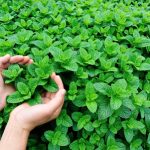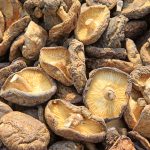Pulsed Electric Field (PEF)-assisted drying is a novel and innovative technology that has emerged as a game-changer in food dehydration. This non-thermal method uses short, high-intensity electric pulses to permeabilize cell membranes, enhancing water removal during subsequent drying processes. Compared to traditional drying methods, PEF-assisted drying offers significant advantages, including reduced energy consumption, enhanced product quality, and improved drying efficiency. This document explores the fundamentals of PEF-assisted drying, its comparison to other drying methods, economic implications, and real-world applications.
How Pulsed Electric Field-Assisted Drying Works
Principles of PEF Technology
- Mechanism: High-voltage electric pulses (ranging from 0.1 to 80 kV/cm) are applied to food materials, creating an electric field that disrupts cell membranes.
- Electroporation: The process induces pore formation in cell membranes, allowing intracellular water to escape more easily during drying.
- The technology is particularly effective for plant-based materials with high water content, such as fruits, vegetables, and tubers.
- Pulse Characteristics:
- Pulse duration: Microseconds to milliseconds.
- Pulse type: Square, exponential decay, or oscillatory.
- Frequency: Adjustable based on material properties and desired outcomes.
Integration with Drying Processes
- Pre-treatment Stage: PEF is applied before conventional drying methods such as hot air drying, freeze-drying, or vacuum drying.
- Enhanced Water Diffusion: By breaking down cell structures, PEF facilitates faster water migration, reducing drying times and energy requirements.
Comparison with Other Drying Methods
1. Hot Air Drying
- Traditional Method: Involves the removal of moisture using heated air.
- Comparison with PEF:
- Energy Efficiency: PEF significantly reduces drying time, lowering energy consumption by up to 30-50%.
- Product Quality: PEF-treated products retain better texture, color, and nutritional value compared to hot air-dried foods.
2. Freeze-Drying
- Premium Method: Uses sublimation to remove moisture at low temperatures.
- Comparison with PEF:
- Cost: Freeze-drying is energy-intensive and costly; PEF pre-treatment can reduce freeze-drying time and operational costs.
- Quality: Both methods maintain high product quality, but PEF is more economical when combined with conventional drying.
3. Vacuum Drying
- Low-Pressure Method: Removes moisture under reduced pressure to enhance efficiency.
- Comparison with PEF:
- Synergy: PEF can improve vacuum drying efficiency by enhancing water diffusion.
- Cost: Vacuum drying alone requires high capital investment; PEF reduces energy input and accelerates the process.
4. Microwave Drying
- Electromagnetic Method: Uses microwaves to heat and evaporate moisture.
- Comparison with PEF:
- Quality: PEF pre-treatment mitigates uneven heating and quality degradation common in microwave drying.
- Energy Use: PEF reduces the drying time, complementing microwave drying’s rapid moisture removal capabilities.
Economic Implications
1. Operational Costs
- Energy Savings: PEF-assisted drying reduces energy consumption by optimizing the drying process, leading to cost savings of up to 30-50%.
- Reduced Drying Times: Faster drying translates to increased throughput and lower production costs.
2. Equipment Costs
- Initial Investment: PEF equipment requires a moderate upfront investment, but its integration with existing drying technologies minimizes long-term costs.
- Maintenance: PEF systems have relatively low maintenance requirements compared to conventional drying equipment.
3. Product Yield and Quality
- Minimized Losses: PEF preserves the structure and nutritional content of foods, reducing waste and enhancing market value.
- Premium Pricing: High-quality dried foods can command higher prices, improving profitability.
4. Environmental Impact
- Sustainability: Lower energy consumption and reduced carbon emissions align with environmental goals, potentially qualifying for green subsidies or incentives.
- Waste Reduction: Improved water diffusion minimizes over-drying and material losses.
Applications in Food Dehydration
Fruits
- Apple Slices:
- PEF pre-treatment enhances moisture diffusion, reducing drying times by 20-30%.
- Retains natural sweetness, color, and crisp texture.
- Mango and Pineapple Chips:
- Improved retention of tropical flavors and vibrant colors.
- High-value products for premium snack markets.
Vegetables
- Carrot and Beetroot Chips:
- Faster drying with preserved antioxidants and vivid colors.
- Enhanced crispness compared to conventional methods.
- Potato Slices:
- PEF-assisted drying reduces oil uptake in subsequent frying, creating healthier snacks.
Herbs and Spices
- Basil, Parsley, and Mint:
- Maintains essential oils and aroma, critical for culinary and medicinal applications.
- Shortened drying times improve operational efficiency.
Other Food Products
- Meat and Fish:
- PEF improves water removal in jerky and dried seafood production.
- Preserves texture and prevents over-drying.
- Grains and Pulses:
- Accelerates drying of soaked legumes, reducing energy input.
Real-World Examples of PEF-Assisted Drying
1. Industrial Applications
- Vegetable Chip Production:
- Leading snack manufacturers use PEF to produce low-fat, high-quality vegetable chips.
- Example: A European producer integrates PEF with hot air drying, reducing energy costs by 30% while maintaining product quality.
- Fruit Processing Plants:
- PEF is employed in drying mango and apple slices for export markets.
- Improved drying efficiency and product shelf life meet international standards.
2. Research Studies
- Carrot Drying:
- A study demonstrated that PEF-treated carrots dried 25% faster than untreated samples, with better retention of beta-carotene.
- Potato Processing:
- Research showed that PEF pre-treatment reduced drying time by 30% and oil absorption in fried potato products by 40%.
Advantages of PEF-Assisted Drying
1. Enhanced Efficiency
- Faster drying processes reduce energy consumption and increase production capacity.
- Synergistic integration with existing drying methods improves overall operational efficiency.
2. Superior Product Quality
- Retains natural flavors, colors, and nutrients, meeting consumer demands for healthy and appealing foods.
- Minimizes structural damage, ensuring high-quality textures.
3. Sustainability
- Reduced energy use and waste generation align with sustainability goals.
- Potential for green certifications enhances market competitiveness.
4. Versatility
- Applicable to a wide range of food products, from fruits and vegetables to meats and grains.
- Easily integrated into various production lines.
Challenges and Future Perspectives
Challenges
- High Initial Costs: PEF equipment requires significant upfront investment, which may deter small-scale producers.
- Technical Expertise: Operators need training to optimize PEF parameters for different foods.
- Scalability: Adapting PEF for large-scale production requires further innovation.
Future Trends
- Integration with AI: Advanced control systems using artificial intelligence could optimize PEF parameters in real-time.
- Expansion into New Markets: Increased adoption in developing countries with growing demand for high-quality dried foods.
- Collaborative Research: Partnerships between academia and industry can address technical and economic challenges.
Pulsed Electric Field-assisted drying represents a cutting-edge advancement in food dehydration, offering unparalleled efficiency, quality, and sustainability. By enhancing water removal and preserving product integrity, PEF stands out as a superior alternative to traditional drying methods. The economic benefits, including energy savings and premium product pricing, further solidify its position as a transformative technology in the food processing industry. As consumer demand for healthy, sustainable snacks grows, the adoption of PEF-assisted drying is set to accelerate, shaping the future of food dehydration.



Leave a Reply